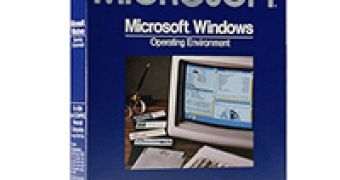This past weekend marked a quarter of a century since Windows 1.0 shipped. Previously codenamed Interface Manager, Windows 1.0 introduces windows which enable users to take advantage of the graphical user interface to interact with the computer instead of MS-DOS commands. A collection of applications make their debut alongside the new OS from Microsoft which was announced as earlier as 1983 but only hit the market November 20, 1985, including Paint, Windows Writer, Notepad, Calculator, calendar, clock, etc.
The good old Control Panel is featured for the first time in Windows starting with December 9, 1987, when the Redmond company launched Windows 2.0.
The software giant soon releases Windows/386 to keep up the pace with the evolution of Intel processor, and the introduction of the Intel 386 chip, as Windows 2.0 was tailored to the Intel 286 CPU.
While programmers have started writing applications for Windows as early as version 2.0, fact is that only with the availability of the Windows software development kit (SDK) for Windows 3.0 that development work takes off.
Windows 3.0 was launched on May 22, 1990, and together with Windows 3.1 (1992) ushered in the era of 16-bit graphics for PC users. Some customers might still remember what it´s like to play Solitaire, Hearts, and Minesweeper in 16-bit.
One year after the release of Windows 3.1, Microsoft makes a key step in the evolution of Windows, and embraces 32-bit architectures. This is the advent of Windows NT, released on July 27, 1993.
"Windows NT represents nothing less than a fundamental change in the way that companies can address their business computing requirements," Bill Gates said at the launch of the new OS.
Remember the TV commercials featuring Rolling Stones singing "Start Me Up" and images of the Start button? If you do, then you know that Windows 95 dropped on August 24, 1995.
Windows 95 adds elements critical to the future success of the platform. The graphical user interface gets overhauled, and now sports the Start menu and the taskbar, with new minimize, maximize, and close buttons on each window.
But most importantly, Windows 95 comes with built-in Internet support, dial-up networking, and Plug and Play capabilities.
1995 is a big year for Microsoft from another point of view, as it marks the availability of the first version of Internet Explorer.
Just three years later, it’s the end of an era for Microsoft, as the company releases the last platform based on MS-DOS, Windows 98.
As of June 25, 1998 Windows 98 users can use their computers to read DVD discs and connect removable storage via the universal serial bus (USB).
On September 14th, 2000 the software giant launches Windows Millennium (Windows Me), and reveals that moving onward, it will base all future Windows releases on the Windows NT and Windows 2000 kernel instead of the Windows 95 code.
Windows 2000 (17 February, 2000) is tested on 1,500 computers for three months before it gets shipped. The OS comes with unprecedented support for hardware and devices.
Windows XP is made available on October 25, 2001, at which point over 1 billion PCs have already shipped worldwide since the mid-70’s.
But Windows XP is followed by a collection of releases, including Windows XP 64-bit Edition (2001), Windows XP Media Center Edition (2002), and Windows XP Tablet PC Edition (2002).
Almost 10 years later, Windows XP continues to be the dominant platform on the OS market, and customers continue to be fond of the operating system, especially after the release of Service Pack 2.
According to information from the software giant, XP is compiled from 45 million lines of code.
It takes Microsoft almost six years to produce the successor of XP. Windows Vista is released at the end of January 2007 for consumers, but the operating system turns out to be a dud, and is plagued with a range of problems, most of which get resolved with the launch of SP1 in 2008.
A little over a year ago, Microsoft launches Windows 7, an operating system that sells seven copies each second, to become the fastest selling OS in history.
Windows 7 is the first releases of Windows built under the leadership of Steven Sinofsky, President, Windows and Windows Live Division.

 14 DAY TRIAL //
14 DAY TRIAL //